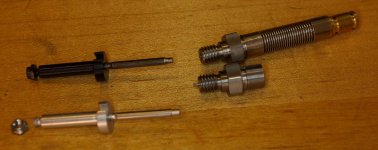Although the process would require live tooling, It would seem to offer many options regarding materials and thread form.
Whirling would be a most similar process, which is used for feed screws of many types.
Maybe the process is used, and I just haven't run in the right circles.
Whirling would be a most similar process, which is used for feed screws of many types.
Maybe the process is used, and I just haven't run in the right circles.


 #Macro #CNC"
#Macro #CNC"

